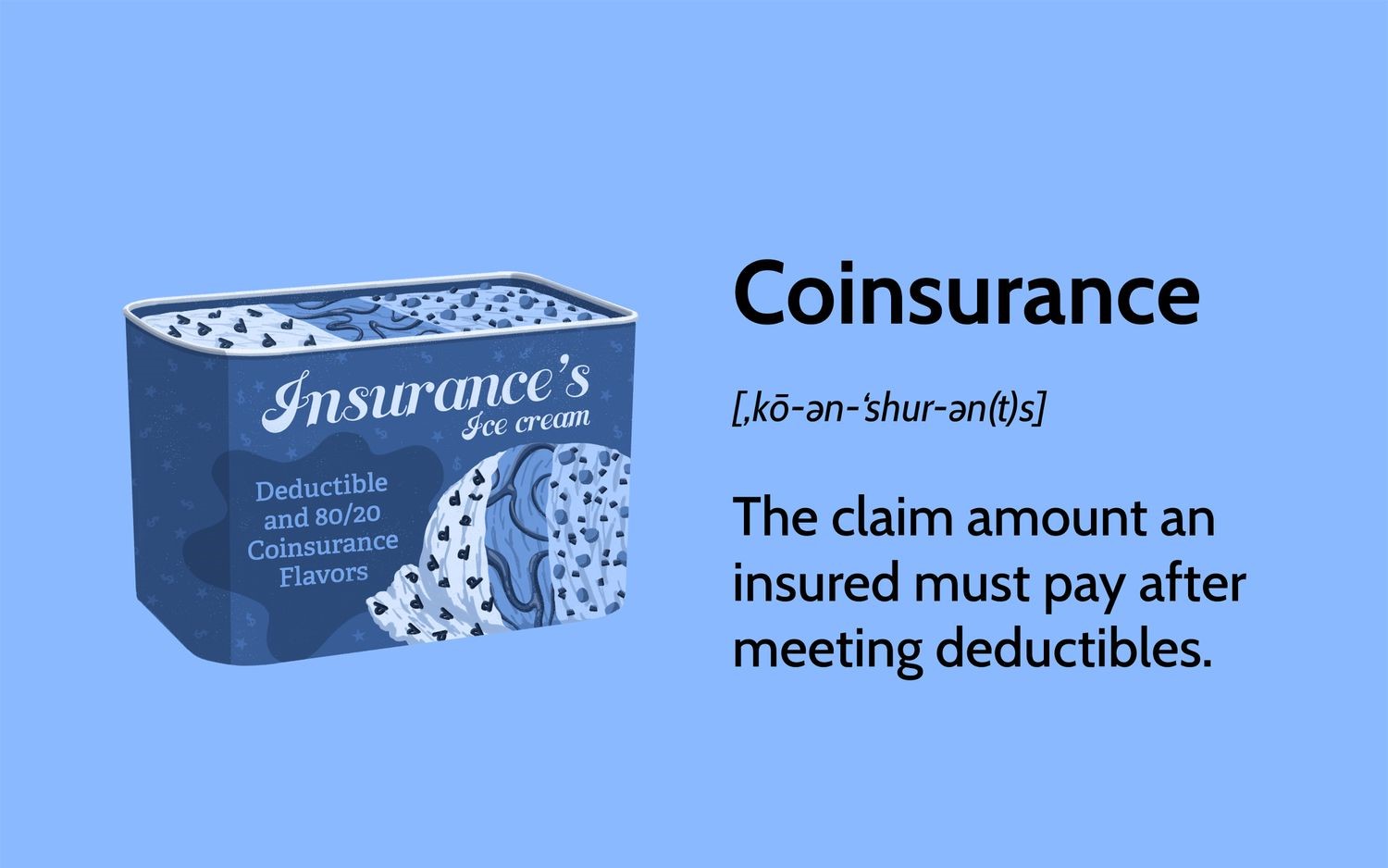coinsurance in health insurance Coinsurance is a key component of health insurance that refers to the percentage of medical costs you share with your insurance company after you’ve met your deductible. Unlike a copayment, which is a fixed amount paid for specific services, coinsurance is a percentage of the total cost of a covered healthcare service.
How Coinsurance Works
- Meeting the Deductible: Coinsurance kicks in only after you’ve paid your deductible. For example, if you have a $1,000 deductible and you’ve met it, coinsurance will apply to the costs of additional medical services.
- Percentage of Costs: Coinsurance is expressed as a percentage of the cost of a covered service. For instance, if your coinsurance rate is 20%, you’ll pay 20% of the cost of the service, and your insurer will cover the remaining 80%.
- Out-of-Pocket Maximum: Coinsurance payments continue until you reach your plan’s out-of-pocket maximum. After reaching this limit, your insurance company covers 100% of covered expenses for the rest of the plan year.
Examples of Coinsurance
- Example 1: If you have a coinsurance rate of 20% and you receive a medical service that costs $500, you will pay 20% of $500, which is $100. Your insurer will cover the remaining $400.
- Example 2: If your deductible is $1,000 and you’ve already paid it, and then you have a procedure that costs $2,000 with a 30% coinsurance rate, you will pay 30% of $2,000, which is $600. Your insurance company will cover the remaining $1,400.
Coinsurance vs. Copayment
- Coinsurance: A percentage of the total cost of the service that you pay after meeting the deductible.
- Copayment (Copay): A fixed amount you pay for specific services, such as $20 for a doctor’s visit, regardless of the total cost of the service.
Types of Services Affected by Coinsurance
Coinsurance generally applies to:
- Hospital Stays: For inpatient care, after meeting the deductible.
- Specialist Visits: Visits to specialists may require coinsurance.
- Outpatient Services: Includes surgeries or diagnostic tests performed in an outpatient setting.
- Prescription Drugs: Some plans apply coinsurance to prescription medications.
Impact of Coinsurance on Healthcare Costs
- Financial Responsibility: Higher coinsurance rates mean you pay a larger percentage of medical costs, which can lead to higher out-of-pocket expenses. Conversely, lower coinsurance rates reduce your share of costs but might come with higher premiums.
- Cost Management: Coinsurance can affect how you manage your healthcare spending. Understanding your coinsurance rate helps in budgeting for potential medical expenses and making informed decisions about seeking care.
- Cost-Sharing Balance: Coinsurance is designed to balance the cost-sharing between you and your insurer, often with the goal of discouraging unnecessary medical visits while still providing coverage for necessary services.
Strategies for Managing Coinsurance Costs
- Understand Your Plan: Review your health insurance policy to understand your coinsurance rates and how they apply to different types of care. This will help you estimate your potential costs for various services.
- Use Preventive Care: Many plans cover preventive services with no coinsurance or copayments. Taking advantage of these services can help you avoid higher costs later on.
- Compare Costs: When possible, compare costs for services between different providers or facilities. Understanding the cost implications can help you make more cost-effective healthcare choices.
- Budget for Medical Expenses: Set aside funds to cover your coinsurance payments, especially if you expect to need significant medical care during the year.
- Keep Track of Expenses: Monitor your medical expenses and coinsurance payments to stay on top of your spending and ensure you’re not exceeding your budget.
Conclusion coinsurance in health insurance
Coinsurance is an important aspect of health insurance that requires you to pay a percentage of the costs of covered medical services after meeting your deductible. By understanding how coinsurance works and how it affects your overall healthcare costs, you can better manage your expenses and make informed decisions about your care. Reviewing your plan’s details, budgeting for out-of-pocket costs, and utilizing preventive care are key strategies for effectively managing the impact of coinsurance on your finances.
